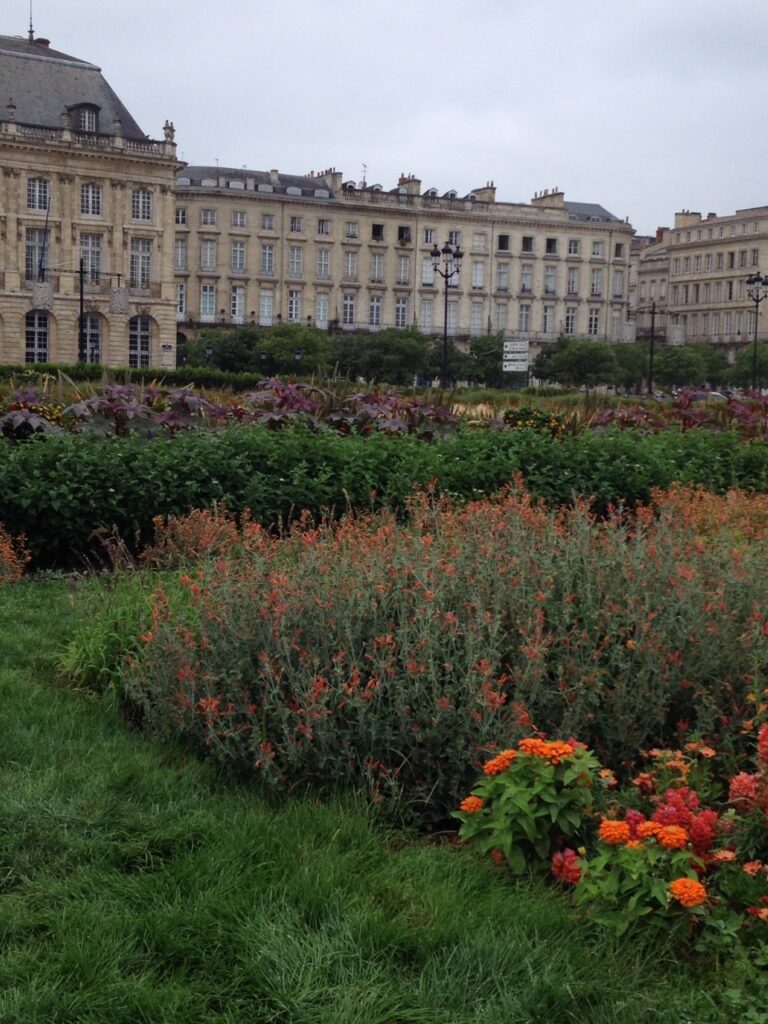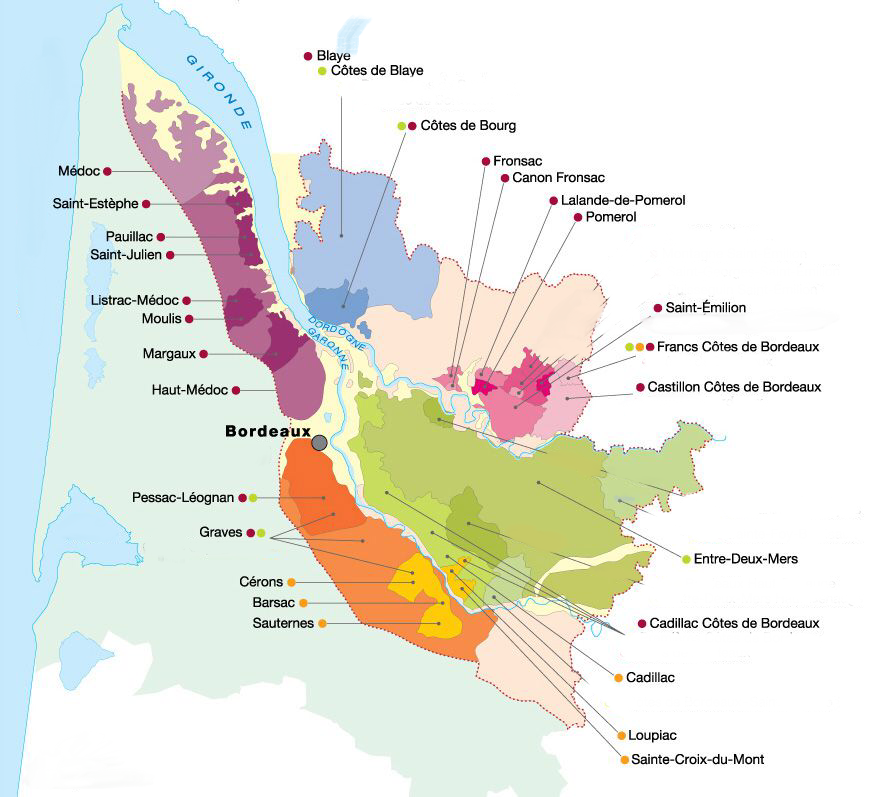
Bordeaux is France's largest wine region -- it has about 300,000 acres of vines (by comparison, Napa Valley has about 46,000 acres), and produces just about every wine style. That's a bit much to digest in one sitting, so let's focus on the Left Bank region of Médoc. In particular, we'll look at the Saint-Julien AOC, and sample a red blend from one of its "classified" châteaux.
Bordeaux generally. Bordeaux produces some of the finest, most age-worthy and most expensive wines in the world. Each of its appellations has its own personality. To further complicate matters, Bordeaux has five entirely different classification systems that apply to some, but not all, of those appellations. Click on the links for a refresher on the Bordeaux appellations and classifications, or French wines generally.

The "Left Bank" is located west of the Garonne river and Gironde estuary. The city of Bordeaux is located here. The area north of the city is called Médoc, where many of the most famous and expensive Bordeaux wines are produced. The area south and west of the city is called Graves.
-
- Left Bank red blends are made predominantly from Cabernet Sauvignon (the use of Merlot is increasing as a result of rising temperatures). These are powerful, tannic, full-bodied and earthy wines, with muted red fruit aromas and flavors.
Médoc produces Cabernet-dominant red blends with moderate alcohol levels. The area was a tidal swamp until the 1600s, when Dutch merchants, seeking another source of wine, drained the area and reclaimed gravel beds that turned out to be just about ideal for vineyards. Médoc has six village AOCs and the regional "Médoc" and "Haut-Médoc" appellations. It's most prestigious villages are: St. Estèphe, Pauillac, Saint-Julien and Margaux.
- Médoc wines are noted for their strong tannins, and often require considerable bottle age before drinking. These wines are perfect for a fatty, spicy steak or lamb.
- Saint-Julien considered to be one of the most homogeneous, reliable and under-rated (in other words, less expensive) of the Médoc village appellations. Perhaps that's because it doesn't have any first growth châteaux. Its wines are noted for subtlety, balance and adherence to tradition, and it's considered the most "Californian" of the Médoc appellations, featuring wines with prominent red fruit and chocolate.
The 1855 Classification. Why do we care about a classification system implemented over one hundred and sixty years ago? It's about prestige . . . which drives prices. The top Médoc wines are classified (thus, the wine will be from an appellation, such a Saint-Julien, and may or may not be classified). Yet, you'll rarely see the ranking (first through fifth growth) on the bottle, simply that it is a "Grand Cru Classe en 1855." (For a cheat sheet of all of the classified châteaux, click here.) The classification generally does provide a good indication of quality.
-
- Historically, the classification was created for the 1855 Universal Exposition in Paris. It only included Left Bank châteaux, and includes 61 red wines designated “first” through “fifth” growths (Premier through Cinquième Cru), and 26 sweet white wines, designated Deuxième Cru, Premier Cru and one “Superior Premier Cru” (Château d’Yquem).
- To complicate matters further, there are also separate "Cru Bourgeois du Médoc" and "Cru Artisans du Médoc" classifications, applicable to smaller châteaux that were not included in the 1855 Classification. If you're curious, they are explained in our Bordeaux primer.
Our wine of the week is a 2012 Château Beychevelle (about $100 retail). This is a "fourth growth" produced in Saint-Julien, made from 47 percent Cabernet Sauvignon, 44 percent Merlot, 4 percent Cabernet Franc and 5 percent Petit Verdot. It's an impressive, concentrated, full-bodied wine, with a dark purple color and notes of muted dark fruit, cocoa, and coffee. It has soft tannins and a long, complex finish. We were impressed by its balance - there's a lot going on in the glass but no one individual thing stands out - think of the music of a symphony. This wine is still a bit on the young side, so we decanted it for an hour to allow it to open up.
- Was it worth the price? Yes, it was. Sure, this isn't an everyday wine, but when you're in the mood for a really nice wine to pair with beef or lamb it's a good choice. Consider that good quality Bordeaux and Napa wines can easily run well over $150 per bottle, and the top wines can easily exceed $1,000 a bottle.
- Some lower-priced options.
- Château Beychevelle makes a second wine, Amiral de Beychevelle, that's well regarded and about half the price, but I've yet to find it in the Austin area.
- Look for wines from the "Haut-Médoc" appellation, such as Château Cantemerle Haut-Médoc Grand Cru Classé (about $40 retail). This is a Fifth Growth. Or, Château Caronne Sainte Gemme, Haut-Médoc (about $20 retail). This is a "Cru Bourgeois" classification, and a great value.
Cheers!
